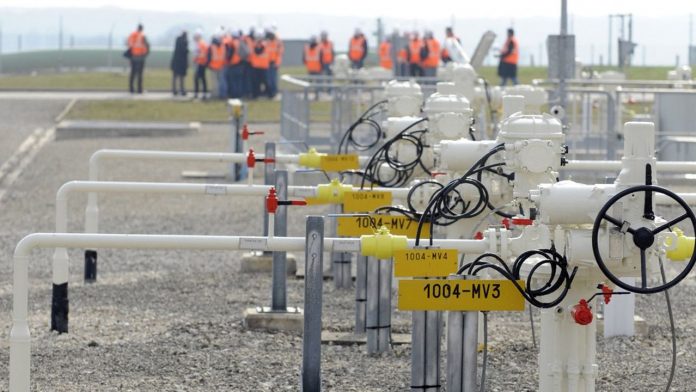Posted Sep 30, 2022 3:49 PM
Will the market eventually regulate itself? If serious doubts exist on the electricity market, the gas market seems in any case, for a few days, to return to somewhat more reasonable levels. Just before the incidents that affected the Nord Stream 1 and Nord Stream 2 gas pipelines in the Baltic Sea, gas prices had reached a two-month low. Spot gas prices in Europe have fallen by 45% since the end of August, before rising slightly at the end of September on suspicion of sabotage of Nord Stream by Russia.
The main factor of this decline: the drop in demand for gas. GRTgaz has observed a drop of 7 to 8% in demand among large industrial consumers connected to its network. The operator of the French gas network has also taken this figure into account in its winter forecasts. “We think that we will see a more marked drop, the sobriety measures will bear fruit”, assures Thierry oublie, the general manager of GRTgaz.
” Mass destruction “
At the beginning of September, Engie had noted a drop of 4 to 5% in gas consumption in households. And certain business segments are even more strongly impacted today, with a “subjected” sobriety. The energy supplier has seen a drop in demand from its large industrial customers in Europe of up to 30% since the start of the crisis. In France, the drop would be around 15%, in Germany 25%. “We should get through this winter without a problem, but it is also at the cost of a massive destruction of industrial demand, confides Jean-Pierre Clamadieu, chairman of the board of directors of Engie. Some have stopped producing. It is said that once prices return to normal, all will restart, but I am not so sure. »
The risk is particularly high in the glass or steel industry, where gas is an essential element of the industrial process. Some fear that, in the coming months, companies will relocate to the United States, where energy costs can be ten times lower… And for those who remain, the drop in production will be brutal. Aluminum Dunkerque, the largest producer of primary aluminum in France, plans to reduce its production by 22% in the fourth quarter. Arcelor Mittal has announced that it will record a fall in its European steel production of 1.5 million tonnes at the end of the year.
Risks for next winter
Despite everything, these figures remain, on the whole, very far from the objectives. The countries of the European Union have set themselves the objective of reducing gas demand, collectively, by 15% over the period from August 1, 2022 to March 31, 2023. Germany has even set the bar at 20%, when countries like Italy or Spain have opted for 7 to 8%.
At the beginning of September, S&P Global noted that the drop in demand was only 6 to 8%. Rystad, for its part, noted that the drop in demand had only reached 1% over one year during the month of August, when prices were at their highest, and 2% in total since the start of the crisis. “The extent of the proposed reduction [par la Commission Européenne, NDLR] should not be underestimated, noted Rystad analyst Fabian Roningen. It will be a monumental task for households, businesses and the wider economy to achieve demand reductions of this magnitude. But in the end, the reward would have a noticeable effect on electricity prices as the overall pressure on supply will be eased. »
For analysts at S&P Global, “this will be insufficient in the event of a hard and/or early winter, and in no case will it remove the risks for the winter of 2023-2024. Energy sobriety is likely to take hold in the years to come, but it would be a lesser evil in the face of a recession and a new wave of relocations…













